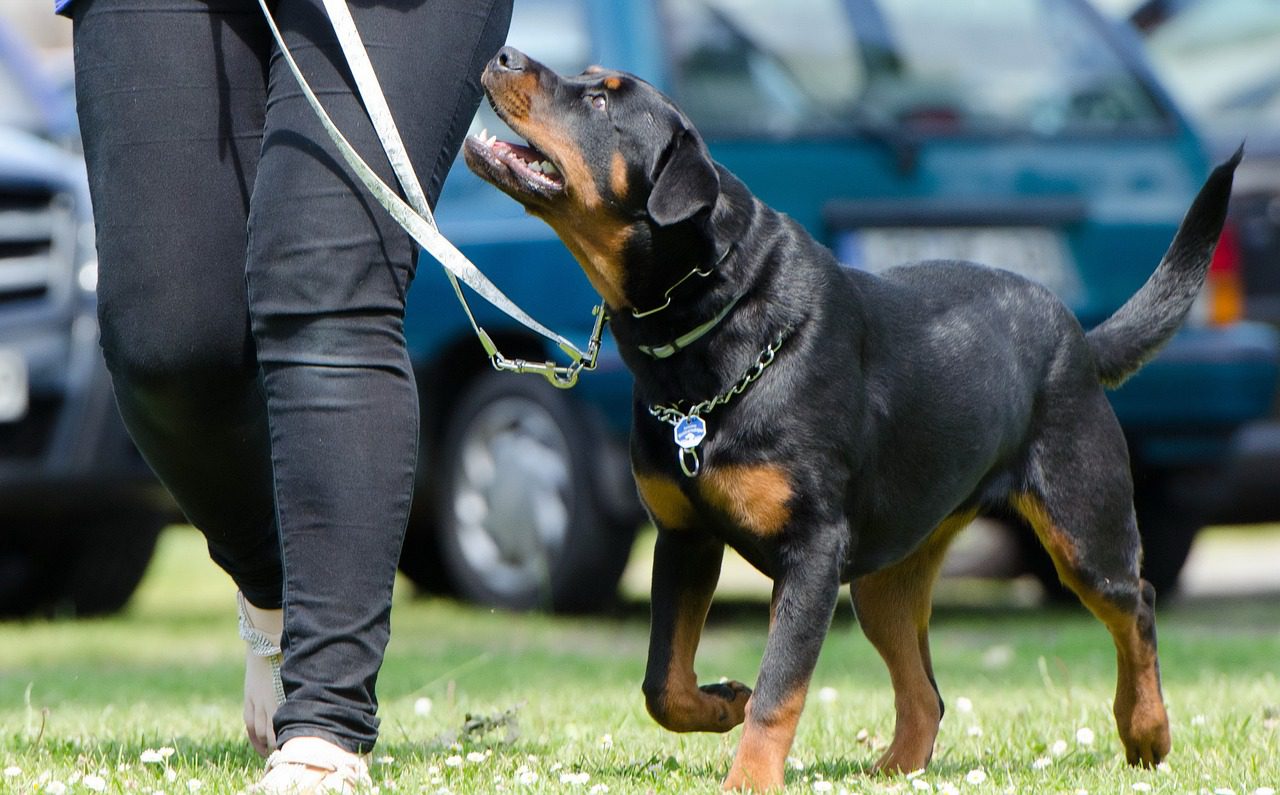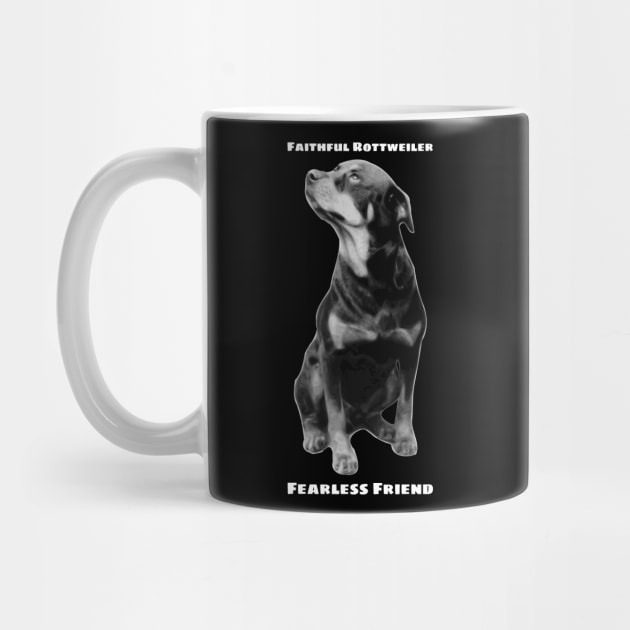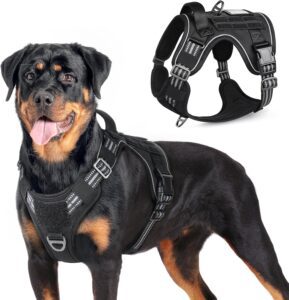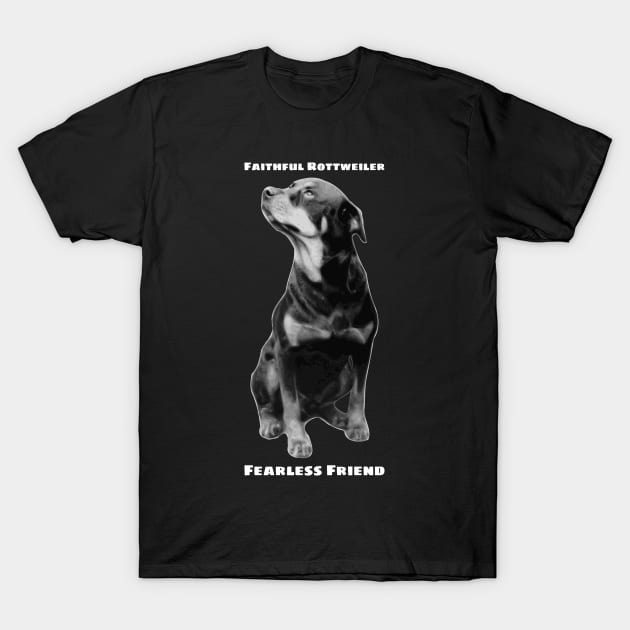Rottweiler Walking Tips for Beginners makes daily strolls easy and fun, with gentle advice and simple steps for safe, happy walks with your strong companion.
Did you know Rottweilers are very loyal and loving? But they need regular exercise to stay happy and healthy.
As a beginner Rottweiler owner, knowing how important regular walks are is key to a strong bond with your pet.

Rottweilers are a strong breed that needs training and exercise every day. Regular walks give them physical activity and mental stimulation. This helps prevent boredom and bad behavior. By following a beginner rottweiler walking guide, you can enjoy happy walks with your Rottweiler for life.
Key Takeaways
- Understand the importance of regular walks for your Rottweiler’s health and happiness.
- Learn how to develop a strong bond with your Rottweiler through consistent training.
- Discover the benefits of mental stimulation during walks.
- Find out how to prevent boredom and destructive behavior.
- Get started with a beginner-friendly walking routine.
Understanding Your Rottweiler’s Exercise Needs
To keep your Rottweiler healthy and happy, it’s key to know their exercise needs. Rottweilers are strong and full of energy. They need regular physical activity to stay well.
The Importance of Regular Walking for Rottweilers
Walking is vital for Rottweilers. It gives them physical and mental stimulation. Exercise helps prevent obesity, strengthens muscles, and boosts heart health.
Physical Benefits for Your Rottweiler
Walking keeps your Rottweiler’s joints mobile and lowers health risks. It also helps keep them at a healthy weight.
Mental Stimulation and Behavioral Benefits
Walking also helps reduce stress and anxiety in Rottweilers. This leads to better behavior and a stronger bond with you.
How Much Exercise Does Your Rottweiler Really Need?
The exercise needs of your Rottweiler depend on their age, size, and health. Knowing these factors helps create a good exercise plan.
Age-Based Exercise Guidelines
Younger Rottweilers need more exercise than older ones. Puppies need gentle, short walks. Adult Rottweilers can handle longer, more active walks.
Signs Your Rottweiler Needs More Activity
If your Rottweiler is showing destructive behavior or seems restless, they might need more activity. This is a sign they need more physical and mental stimulation.
| Age Group | Exercise Needs | Example Activities |
|---|---|---|
| Puppy (0-12 months) | Gentle, short walks | 10-minute walks, playtime |
| Adult (1-7 years) | Regular, moderate exercise | 30-minute walks, jogging, training sessions |
| Senior (8+ years) | Gentle, less frequent exercise | Short walks, light play |

Essential Preparation Before Your Walk
Getting ready is key for a great walk with your Rottweiler. Having everything you need before you go can really improve your walk.
Get this great design TODAY
Pre-Walk Checklist for Rottweiler Owners
It’s important to have a checklist before you walk. This ensures you have the right gear and that your Rottweiler is healthy.
Essential Items to Bring Along
When walking your Rottweiler, don’t forget to bring essential items like water, treats, and poop bags. These make the walk fun for both you and your pet.
Quick Health Check Before Heading Out
Do a quick health check on your Rottweiler before you go. Look for any signs of sickness or injury that might impact the walk.
Setting Up a Walking Routine That Works
Creating a regular walking routine is key for your Rottweiler’s health and your bond. It builds a connection and ensures they get enough exercise.
Establishing Consistent Walking Times
Having consistent walking times helps your Rottweiler know when it’s time to walk. This makes walks more enjoyable and less stressful.
Planning Your Walking Routes
Planning your walking routes ahead of time can keep your Rottweiler safe and happy. It helps avoid places that might be scary or stressful.
| Item | Purpose | Tips |
|---|---|---|
| Water | Hydration | Bring a portable bowl |
| Treats | Training and Reward | Choose healthy options |
| Poop Bags | Cleaning Up | Always carry extras |

Walking Your Rottweiler Puppy: Special Considerations
Walking a Rottweiler puppy needs special care. It’s important to balance exercise with rest to avoid harming their growing joints.
Age-Appropriate Exercise for Growing Puppies
Rottweiler puppies need exercise that fits their age. Too much exercise can cause health problems. So, it’s crucial to follow guidelines.
The 5-Minute Rule for Puppy Exercise
A good rule is to limit puppy exercise to 5 minutes per month of age. For example, a 3-month-old puppy should have walks of no more than 15 minutes.
Protecting Developing Joints
Puppies’ joints are still growing. So, it’s important to avoid high-impact activities. Gentle walks and playtime are best to prevent damage.
Building Positive Walking Habits Early
It’s important to start with good walking habits for Rottweiler puppies. Make their first walks positive and rewarding.
First Walking Experiences
For their first walks, choose quiet areas with few distractions. Keep the walks short and fun. Use treats and praise to encourage good behavior.
Making Walks Fun and Rewarding
To make walks fun, add play and positive reinforcement. This builds a strong bond and encourages good walking behavior.

Socialization Opportunities During Puppy Walks
Walks are great for socializing your Rottweiler puppy. Expose them to different environments and controlled interactions.
Safe Exposure to New Environments
Introduce your puppy to different places, like parks and pet-friendly stores. Make sure these places are safe and not too overwhelming.
Controlled Meetings with Other Dogs and People
Arrange meetings with other dogs and people in a controlled way. This helps your puppy develop social skills. Positive interactions are key to healthy socialization.
| Age (Months) | Exercise Duration (Minutes) | Socialization Tips |
|---|---|---|
| 3 | 15 | Introduce to new people and dogs |
| 4 | 20 | Visit pet-friendly areas |
| 5 | 25 | Increase exposure to new environments |
Adult Rottweiler Walking Strategies
Walking your adult Rottweiler is more than just a walk. It’s a chance to bond and train. As they grow, their needs change, needing a smart walking plan.
Meeting the Exercise Needs of Adult Rottweilers
Adult Rottweilers need regular exercise to be healthy and happy. A good rottweiler exercise routine mixes physical and mental challenges.
Duration and Intensity Guidelines
Adult Rottweilers need at least 30 minutes of exercise daily. This can be two walks. The walk’s intensity should match the dog’s health and fitness.
Incorporating Mental Challenges During Walks
Adding rottweiler obedience training to walks keeps them mentally sharp. Try scent work, obedience, and leash training to keep them engaged.
Maintaining Focus and Discipline During Walks
Keeping focus and discipline is key, even with distractions. Adult rottweiler training should include basic commands and stopping pulling.
Basic Commands to Use While Walking
Commands like “heel,” “stop,” and “leave it” help keep walks orderly. Consistency is crucial for these commands.
Dealing with Stubbornness and Distractions
Stay calm and firm when faced with stubbornness or distractions. Use positive reinforcement to refocus your Rottweiler.
Dog training experts say, “Consistency, patience, and positive reinforcement are key for Rottweiler obedience training.”
“A well-exercised Rottweiler is a happy Rottweiler. Make sure to balance physical exercise with mental stimulation.”
Senior Rottweiler Walking Guidelines
Walking your senior Rottweiler needs careful thought. As they age, their exercise needs change. It’s important to adjust their walks to fit their new needs.
Adjusting Exercise for Aging Rottweilers
Aging Rottweilers need gentle walks to avoid hurting their joints and muscles. Gentle, shorter walks are better than long, hard ones.
Recognizing Age-Related Limitations
Senior Rottweilers may get tired faster. They might slow down or need more breaks. It’s important to notice these signs to adjust their walks.
Gentle Exercise Options for Seniors
Good exercise for seniors includes short walks on flat ground and swimming. These are low-impact and fun for them.
Signs Your Senior Rottweiler Needs a Different Walking Routine
Watching your senior Rottweiler’s health and behavior is key. If they show increased stiffness, pain, or don’t want to walk, it’s time to change their routine.
Monitoring Joint Health and Mobility
Watch your Rottweiler’s joints and how they move. If they have stiffness, pain, or trouble getting up, it’s time to adjust their walks.
When to Consult Your Vet About Exercise
If you’re not sure about the best exercise for your senior Rottweiler, or if you see concerning signs, talk to your vet. They can give advice based on your dog’s health.
Leash Training Your Rottweiler
Teaching your Rottweiler to walk on a leash is about understanding dogs and using positive methods. It makes walks better and strengthens your bond.
Basic Leash Training Techniques
To begin, you need to communicate clearly and set rules. Start with indoor leash practice where there are fewer distractions.
Starting with Indoor Leash Practice
Indoor practice helps your Rottweiler get used to the leash and respond to commands. It’s done without outside distractions.
Rewarding Proper Leash Behavior
Use positive reinforcement. Give treats and praise when your Rottweiler walks beside you without pulling.
Addressing Pulling Behavior
Pulling on the leash is common. Use methods like “Stop and Wait” and changing direction to fix this.
The “Stop and Wait” Method
Stop moving when your Rottweiler pulls. Wait for them to return to your side before moving again.
Direction Change Technique
Changing direction suddenly teaches your dog to follow you and pay attention.
Progressing to Loose-Leash Walking
The aim is to walk without pulling. This needs gradual distraction training and regular practice.
Gradual Distraction Training
Start adding distractions like other dogs, people, and noises while walking on a leash.
Consistency and Patience in Training
Being consistent and patient is key. Regular practice and positive feedback will help you succeed in leash training.
Making Walks Fun and Engaging
You can make walks exciting for your Rottweiler with a few simple tricks. Adding fun elements and changing your routine can make walks better for your dog.
Interactive Walking Games for Rottweilers
Interactive games during walks can boost your Rottweiler’s mental and physical health. Training games and scent work are great for keeping them interested.
Training Games During Walks
Games like “heel,” “sit,” and “stay” can be played during walks. They help train your Rottweiler and make walks fun.
Scent Work and Exploration Activities
Scent work lets your Rottweiler follow smells, which is mentally stimulating. Exploring new places and smells makes walks more fun.
Varying Your Walking Routine
Changing your walking route and adding new challenges can prevent boredom. This includes exploring different environments and new challenges.
Exploring Different Environments
Try new routes with different terrains and environments. New sights, smells, and sounds keep walks exciting for your Rottweiler.
Incorporating New Challenges
Adding new challenges, like obstacles or commands in busy places, keeps your Rottweiler engaged. It keeps them mentally and physically active.
Essential Equipment for Walking Your Rottweiler
Having the right tools is key for a fun and stress-free walk with your Rottweiler. The right gear keeps your dog comfy and safe. It also makes walking more fun for you.
Choosing the Right Collar or Harness
Deciding between a collar and a harness is important for walking your Rottweiler. Harnesses are often better for strong breeds like Rottweilers.
They spread the leash’s force across the chest and shoulders, easing neck strain.
Front-Clip vs. Back-Clip Harnesses
Front-clip harnesses are great for training. They stop pulling by changing your dog’s direction. Back-clip harnesses are better for dogs that don’t pull much.
Finding the Perfect Fit for Your Rottweiler
To ensure your Rottweiler is comfortable, measure their girth and check the sizing chart. The harness should fit snugly but not too tight.
It should allow two fingers to fit between the harness and your dog’s skin.
Leash Options for Different Situations
The leash you choose greatly affects your walk. Different situations need different leashes.
Standard Leashes vs. Training Leads
Standard leashes work well for everyday walks. Training leads, longer, are better for training exercises.
When to Use Different Leash Types
Use standard leashes for regular walks. Training leads are best for obedience training or when you need more space for your dog to roam while keeping control.
Rottweiler Walking Tips for Beginners: Building Confidence and Control
Learning to walk a Rottweiler can feel scary at first. But, with the right steps, you can become confident and in control.
This makes walks safe and fun for both you and your dog.
Overcoming Nervousness When Walking a Powerful Breed
Walking a Rottweiler can be daunting, but it’s doable. By understanding your dog’s signs and body language, you can gain their trust and confidence.
Body Language and Energy Management
It’s key to manage your energy and body language when walking a Rottweiler. Stay calm and assertive to make your dog feel safe.
Handling Techniques for Better Control
Using the right techniques helps you keep control during walks. Practice loose-leash walking and avoid pulling to stop pulling behavior.
Establishing Yourself as a Confident Leader
Being a confident leader is crucial for a good walking routine. By setting clear rules and being consistent, you build trust with your Rottweiler.
Setting Clear Boundaries During Walks
Clear boundaries help your Rottweiler know what’s expected during walks. Be consistent with commands and rewards to encourage good behavior.
Building Trust Through Consistent Handling
Consistent handling builds trust between you and your Rottweiler. Use positive reinforcement to encourage good behavior and strengthen your bond.
Safety and Health Considerations
Keeping your Rottweiler safe and healthy on walks is important. You need to watch out for dangers and take action to avoid them.
Weather Safety for Rottweilers
Weather can affect your Rottweiler’s safety on walks. It’s key to know the risks of hot and cold weather.
Hot Weather Walking Precautions
When it’s hot, avoid walking your Rottweiler during the hottest hours (11 am to 3 pm). Walk them in the morning or evening instead.
Cold Weather Protection
In cold weather, use a coat or sweater to keep your Rottweiler warm. Watch out for icy spots that can make them slip.
Recognizing Signs of Fatigue or Distress
Watch your Rottweiler’s behavior on walks. Look for signs of tiredness or distress like panting, limping, or not wanting to move.
When to Cut a Walk Short
If you see signs of distress, end the walk early. Give your Rottweiler rest and water.
Post-Walk Health Check
Do a quick health check when you get home. Make sure your Rottweiler isn’t hurt or sick.
Managing Encounters with Other Dogs and People
When walking your Rottweiler, you might meet other dogs and people. It’s important to handle these meetings safely.
Proper Etiquette for Dog Meetings
Keep your Rottweiler on a leash. Let the other dog come to you first. If needed, ask the other owner to calm their dog.
Handling Unwanted Approaches
If someone comes too close, stay calm. Tell them to step back and give you space.
FAQ
How much exercise does a Rottweiler need?
A Rottweiler needs at least 30 minutes of exercise daily. This can include walking, running, and playtime. The exact amount depends on their age, size, and energy level.
What is the best way to leash train a Rottweiler?
To leash train a Rottweiler, start with short sessions. Use positive reinforcement and be consistent. Begin with a comfy harness and leash. Then, introduce new places and distractions slowly.
How can I make walks more engaging for my Rottweiler?
Make walks fun by adding interactive games like hide-and-seek. Try new places and challenges to keep them interested.
What are the signs that my Rottweiler needs more exercise?
If your Rottweiler is restless, destructive, or barks a lot, they need more exercise. Increase the walk duration or intensity.
How can I ensure my Rottweiler’s safety during walks?
Keep your Rottweiler safe by being aware of your surroundings. Always use a leash and avoid bad weather. Carry essentials like water, treats, and poop bags.
What are the best leash options for walking a Rottweiler?
The best leashes for Rottweilers are sturdy and comfy. Look for ones made from nylon or leather. Choose a leash with a secure clip and a good handle.
How can I overcome nervousness when walking a powerful breed like a Rottweiler?
To feel more confident, focus on training and practice. Show your Rottweiler you’re a calm leader. Use positive reinforcement to encourage good behavior.
What are the benefits of regular walking for Rottweilers?
Walking is great for Rottweilers. It improves their health, reduces stress, and keeps their minds sharp. It also strengthens your bond with them.
How can I adjust my Rottweiler’s exercise routine as they age?
As your Rottweiler gets older, adjust their walks to fit their needs. Senior Rottweilers might need shorter, gentler walks. Avoid activities that could hurt their joints.
What are some tips for walking a Rottweiler puppy?
Walk a Rottweiler puppy short and fun walks. Focus on building good habits early. Use treats and praise to encourage them. Be patient with their growth.
Get this great Rottweiler Tee Shirt TODAY
Conclusion:
Enjoying a Lifetime of Happy Walks with Your Rottweiler
Walking your Rottweiler can be very rewarding. It strengthens your bond and creates lasting memories.
By following the tips for beginners, you’ll understand your Rottweiler better. This makes walks more enjoyable for both of you.
Remember, consistency, patience, and positive reinforcement are crucial for training. They help make your walks a joy.
This strengthens your companionship, making every walk special.
With the right approach, you’ll have many happy walks ahead. You’ll explore new places and enjoy each other’s company.
By focusing on your Rottweiler’s needs, you’ll keep your relationship happy and healthy.
















